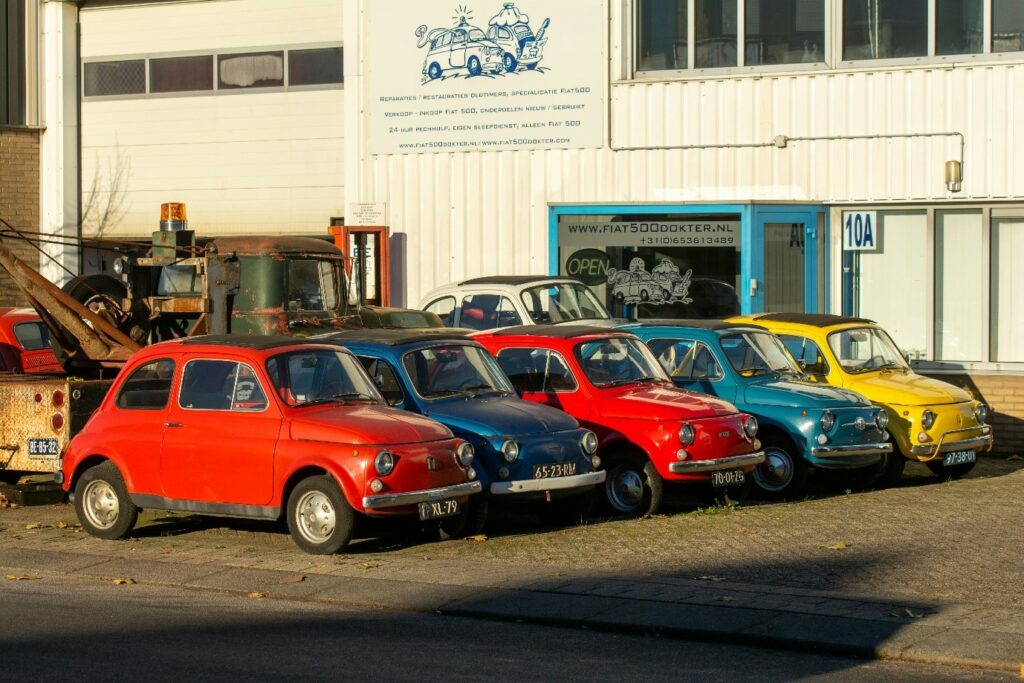
Classic cars have a universal appeal for collectors and people all around the world. In particular, the Fiat 500 is an iconic classic car model known for its charming nature and unique aesthetic. It is clear to see how popular the Fiat 500 is as the brand has sold millions of cars worldwide. With the Fiat 500 car continuing to turn heads even today, let’s explore how it has continued to stay relevant in modern society.
The Fiat 500 which is also known as the “Cinquecento” has truly cemented a place for itself in contemporary culture. Having been designed by Dante Giacosa and launched in July 1957, the Fiat 500 is hailed for its compact size and alluring appearance. Its practical nature also means that it can be easily parked which is perfect for those who are skeptical about their driving or people who are just learning to drive. However, it is also respected by experienced drivers who want to show off their prized possession.
The Fiat 500 has a long and rich history. Having been introduced in 1957, it paved the way for many small cars to enter onto the scene. Its compact size, less than 3 meters long and air-cooled, two-cylinder engine makes it the ideal choice for urban driving. However, it still boasts a sizeable interior meaning that drivers of this car can store their objects with no problem.
This model lasts 200,000 to 250,000 miles with proper care meaning that you can keep it for a long time without having to replace it. There are several things that can be done to lengthen the lifespan and reliability of a Fiat 500 car. For example, ensuring that your Fiat 500 has dependable tires is crucial for safety, performance, and overall driving experience. With this type of car, regular maintenance is necessary to ensure it performs to the best of its ability in the long run.
Over the years, there have also been several Fiat 500 models released, keeping car collectors intrigued. The 500 has produced a long line of Fiats, including models such as the 850 series and the 850 Spider. While it seemed for a while that the Fiat 500 car had lost its appeal, the appeal of the Fiat 500, was renewed once again in 2007 when Fiat introduced a modern version of the classic city car that incorporated the iconic design elements while meeting contemporary standards.
The cultural impact of the Fiat 500 is equally notable. It has made its way into art, clothing choices and culture. From appearing in films like “The Italian Job”, to being showcased in magazines, the Fiat 500 has made its way into every aspect of modern culture. The Fiat 500 is also regularly showcased on social media platforms such as Instagram and TikTok which has further accelerated the growth and popularity of this type of car. Even celebrities such as Jennifer Lopez and George Clooney have been associated with the Fiat 500s which has further integrated this type of car into contemporary culture.
Nowadays, with a modern interest in electric cars, the Fiat 500e has been released which is the electric version of the 500 that is eco-friendly. With a 42kWh battery, it can offer a range of up to 149 miles before needing to be recharged. This makes it ideal for travelling around towns or cities as well as going on short trips. The Fiat 500 brand is continuing to stay relevant by promotion subscriptions and car-sharing. Although there is plenty of rival car brands making a name for themselves in the world of electric cars, the Fiat 500 is a symbol of timeless elegance.
Overall, with an impressive legacy and a promising future, the Fiat 500 is a well-received car on a global scale. With its timeless appeal, the car is certainly going to be relevant for all generations to come.


